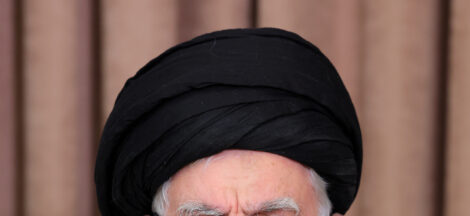By K Raveendran
Ever since Israel and the United States jointly launched strikes against Iran’s nuclear facilities, de-escalation began to shape the contours of strategic discourse in West Asia. What was initially presented as a bold and surgical operation against Iran’s suspected nuclear infrastructure quickly unfolded into something far more perilous, chaotic, and revealing.
For Israel, the ambition to eliminate or at least set back Iran’s nuclear program had long stood at the centre of its national security calculus. A nuclear Iran, in Tel Aviv’s reckoning, would be an existential threat. That notion drove countless covert sabotage operations, diplomatic lobbying campaigns, cyberattacks, and eventually culminated in a direct military strike this month with American backing. But the aftermath of this latest escalation forced a sobering reassessment in Israel’s war rooms. Tel Aviv discovered that while a nuclear-capable Iran posed a strategic threat in the long term, a ballistic missile-capable Iran was an immediate and terrifying danger. The sheer volume, range, and precision of Iranian missile strikes during the 12-day war left Israel’s layered defence systems rattled, and the civilian population deeply shaken.
Reports suggest Iran fired as many as 500 ballistic missiles targeting Tel Aviv and several other key locations in Israel. The Iron Dome and other missile defence systems, though operationally successful to an extent, were stretched thin, intercepting an unprecedented barrage that disrupted normal life, overwhelmed air raid protocols, and exposed a vulnerability that no amount of diplomacy or military boasting could paper over.
Worse, Iranian missile production capabilities were clearly underestimated. Defence analysts estimated that Iran could produce up to 300 missiles per month — an output that, over six years, would result in nearly 30,000 ballistic missiles. That is not merely a military statistic but a chilling political reality. Israel’s long-standing qualitative military edge — its ability to deliver precision strikes, operate on multiple fronts, and leverage cutting-edge technology — was not built to withstand a prolonged missile attrition campaign. The prospect of facing tens of thousands of missiles in the foreseeable future was not just undesirable; it was strategically unsustainable.
That is why, despite tough rhetoric and continued air raids in the early days, Israel’s war cabinet, led by Prime Minister Benjamin Netanyahu, began recalibrating its objectives. Initially conceived as a swift, decisive blow to Iran’s nuclear ambitions, the military operation was swiftly overtaken by a new imperative — survival in the face of a powerful and determined adversary with immense missile depth. Compounding the military calculus was the growing uncertainty around the actual impact of the strikes on Iran’s nuclear capability.
While the attack had succeeded in damaging several facilities and set back centrifuge development by months, if not years, doubts began to surface about the true efficacy of the mission. Intelligence assessments started to suggest that Iran’s nuclear infrastructure was more dispersed, hardened, and covertly protected than previously assumed. If the price of the attack was a missile war, and the gain was only marginal delay in Iran’s nuclear timeline, then the trade-off no longer looked so advantageous. What began as a campaign of strategic assertiveness quickly turned into a high-stakes gamble.
For Iran, the war offered an opportunity to showcase deterrence and resilience, but it also imposed substantial costs. The Islamic Republic did not seek a protracted war with Israel or an open confrontation with the United States. Rather, Tehran wanted to demonstrate capability, not inevitability — to show that its missile arsenal was credible, operational, and scalable. The goal was not total war, but calibrated retaliation. And that is exactly what it delivered. The missile strikes were intense but largely limited to military and strategic sites, with many analysts noting that Iran could have inflicted far more damage if it truly wanted to escalate to total war. This restraint was by design. Iran knows that while it can cause significant damage to Israel, a long war would risk bringing U.S. forces deeper into the conflict, invite regional instability, and jeopardize its own economic recovery.
Moreover, Tehran was already benefiting from the geopolitical side-effects of the war. Since the outbreak of hostilities, Iran’s oil exports surged by 30 to 40 percent — a remarkable jump for a country that has long operated under heavy sanctions. Global energy markets, jittery with the prospect of expanded conflict in the Gulf, began pricing in higher risk premiums. This served Iran’s interests well. Its posturing over the Strait of Hormuz — that narrow waterway through which a significant chunk of the world’s LNG and oil supplies pass — added another layer of volatility to markets. The mere threat of disruption, even without any actual blockade, was enough to send energy prices climbing. But this too followed a pattern.
For decades, Iran has mastered the art of using Hormuz as a bargaining chip, a strategic pressure valve. And yet, it has almost never fully executed the threat of closing the strait. The reasons are obvious: Hormuz is not only vital for global trade, it is also crucial for Iran’s own economy. Disrupting it would cut off Iran’s principal oil export route, further destabilise its economy, and likely provoke international military response. So the threat is constantly deployed but rarely acted upon — a game of brinkmanship designed to raise the stakes without flipping the table.
Other global powers, too, had vested interests in dialling down the conflict. The United States, though militarily aligned with Israel, was not in a mood for a full-blown West Asian war. A war that could spike oil prices, disrupt global shipping, and drag U.S. troops into another prolonged engagement was precisely the scenario Washington wanted to avoid. Thus, while Washington lent operational support to Israel’s initial strikes, it was also the most active mediator behind the scenes once things spiralled into retaliatory cycles. American officials, working through European and Gulf intermediaries, kept communication channels with Iran open, even as the missiles flew overhead.
Arab Gulf states, many of whom have recently begun normalizing relations with Israel, also found themselves walking a tightrope. They feared the expansion of the conflict and its possible spillover into their territories, especially given the vulnerabilities of oil infrastructure in Saudi Arabia and the UAE. For these countries, a stable region is not merely a political aspiration but an economic necessity. The last thing Riyadh or Abu Dhabi wanted was for their refineries, shipping ports, or sovereign wealth flows to be threatened by another round of regional upheaval. Thus, their quiet diplomacy and lobbying in Washington, Tehran, and Tel Aviv played a significant role in building momentum toward a ceasefire.
Ultimately, after 12 days of strikes, counter-strikes, and global market tremors, all parties began to realize that the status quo was preferable to continued escalation. Israel could not afford to remain under constant missile fire; Iran could not sustain economic growth and strategic advantage under prolonged conflict; the United States could not tolerate another Middle East quagmire; and Gulf countries could not bear the shockwaves to their economies. All of this created the perfect convergence for a ceasefire — not born out of victory, but of mutual exhaustion, strategic pragmatism, and the cold arithmetic of cost-benefit calculations.
In the final analysis, the ceasefire was not a gesture of goodwill, nor was it a declaration of resolution. It was the only realistic option left on the table. Each party had overplayed and overstated its strategic bandwidth and had to quietly acknowledge the limits of military and political ambition. The war that began as a quest to delay nuclear apocalypse ended up teaching all players a lesson in contemporary deterrence — that war in the missile age is no longer about winning, but about surviving the next 12 days. (IPA Service)




 Beware Of Narendra Modi Government’s Samvidhaan Hatya Diwas
Beware Of Narendra Modi Government’s Samvidhaan Hatya Diwas 